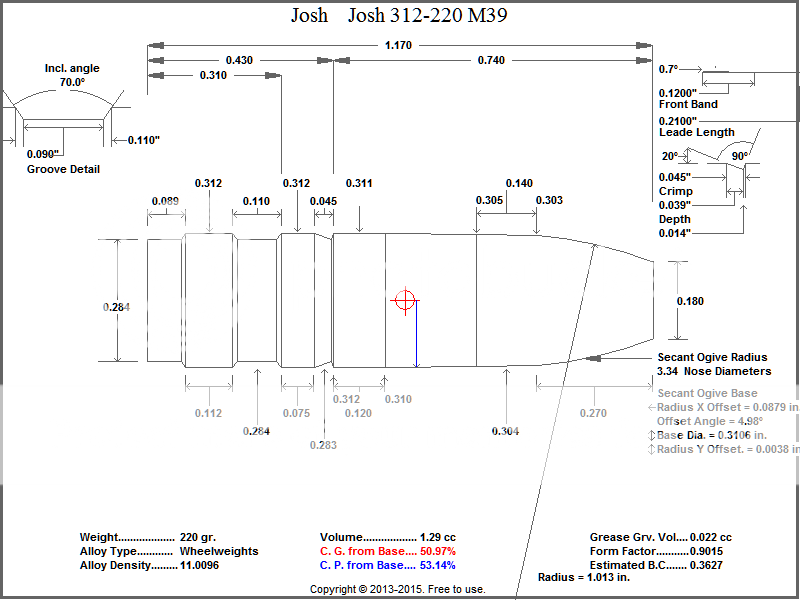Josh
Well-Known Member
Earlier I took a chamber cast with sulfer, using the numbers from this cast I have drawn a bullet I hope will fit the very long "D" throat this rifle was cut with.
The cast measurements are as follows.
Neck length 0.400"
Throat length 0.312"
Throat taper 0.312" to 0.310"
Bore diameter 0.310"
Bore land diameter 0.305"
This said, I am having issues with the C.P. and C.G. due to the throat and the need to fill it. So that said, lets see if we can work through this design, I plan to get a 4 cavity mould with this and another design from Accurate.

The cast measurements are as follows.
Neck length 0.400"
Throat length 0.312"
Throat taper 0.312" to 0.310"
Bore diameter 0.310"
Bore land diameter 0.305"
This said, I am having issues with the C.P. and C.G. due to the throat and the need to fill it. So that said, lets see if we can work through this design, I plan to get a 4 cavity mould with this and another design from Accurate.



